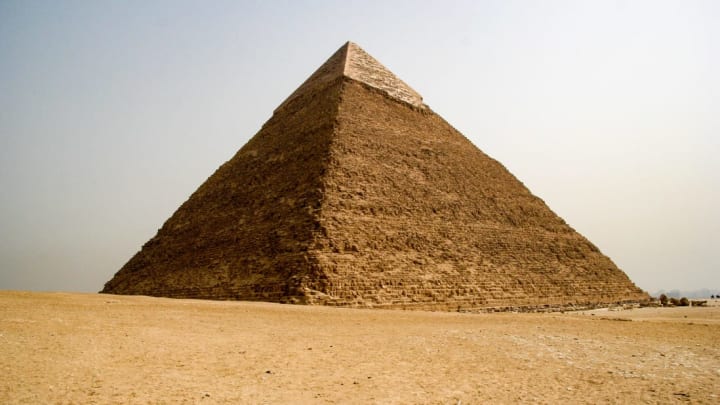Scientists Discover a Mysterious Void in the Great Pyramid of Giza

The Great Pyramid of Giza, the largest in all of Egypt, was built more than 4500 years ago as the final resting place of the 4th Dynasty pharaoh Khufu (a.k.a. Cheops), who reigned from 2509 to 2483 BCE. Modern Egyptologists have been excavating and studying it for more than a century, but it's still full of mysteries that have yet to be fully solved. The latest discovery, detailed in a new paper in the journal Nature, reveals a hidden void located with the help of particle physics. This is the first time a new inner structure has been located in the pyramid since the 19th century.
The ScanPyramids project, an international endeavor launched in 2015, has been using noninvasive scanning technology like laser imaging to understand Egypt's Old Kingdom pyramids. This discovery was made using muon tomography, a technique that generates 3D images from muons, a by-product of cosmic rays that can pass through stone better than similar technology based on x-rays, like CT scans. (Muon tomography is currently used to scan shipping containers for smuggled goods and image nuclear reactor cores.)
The newly discovered void is at least 100 feet long and bears a structural resemblance to the section directly below it: the pyramid's Grand Gallery, a long, 26-foot-high inner area of the pyramid that feels like a "very big cathedral at the center of the monument," as engineer and ScanPyramids co-founder Mehdi Tayoubi said in a press briefing. Its size and shape were confirmed by three different muon tomography techniques.
They aren't sure what it would have been used for yet or why it exists, or even if it's one structure or multiple structures together. It could be a horizontal structure, or it could have an incline. In short, there's a lot more to learn about it.
In the past few years, technology has allowed researchers to access parts of the Great Pyramid never seen before. Several robots sent into the tunnels since the '90s have brought back images of previously unseen areas. Almost immediately after starting to examine the Great Pyramid with thermal imaging in 2015, the researchers discovered that some of the limestone structure was hotter than other parts, indicating internal air currents moving through hidden chambers. In 2016, muon imaging indicated that there was at least one previously unknown void near the north face of Khufu's pyramid, though the researchers couldn't identify where exactly it was or what it looked like. Now, we know its basic structure.
"These results constitute a breakthrough for the understanding of Khufu's Pyramid and its internal structure," the ScanPyramids team writes in Nature. "While there is currently no information about the role of this void, these findings show how modern particle physics can shed new light on the world's archaeological heritage."